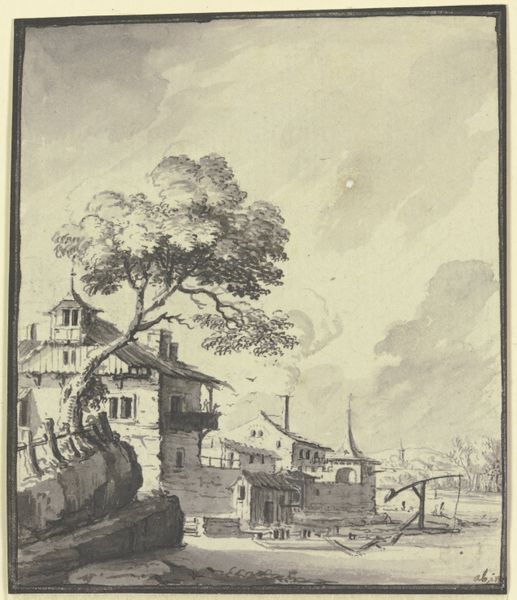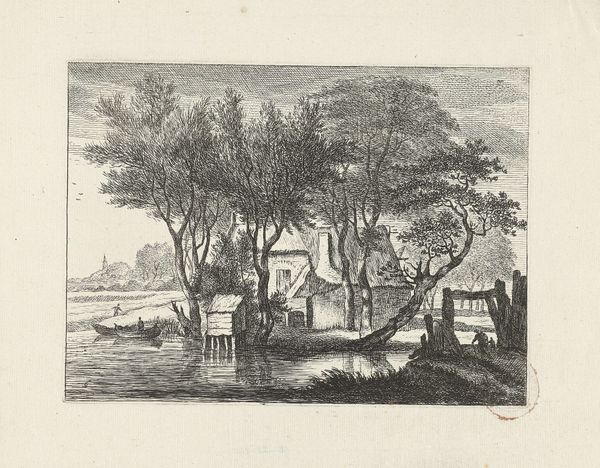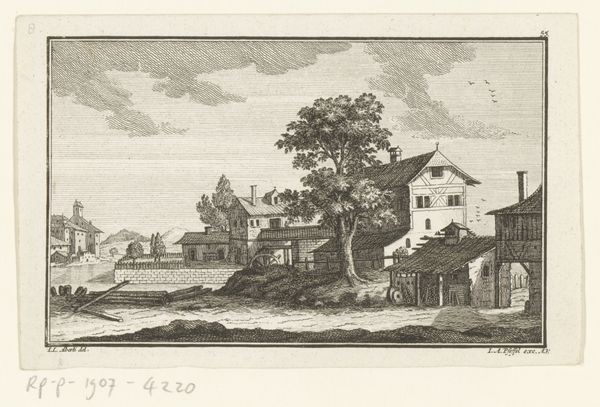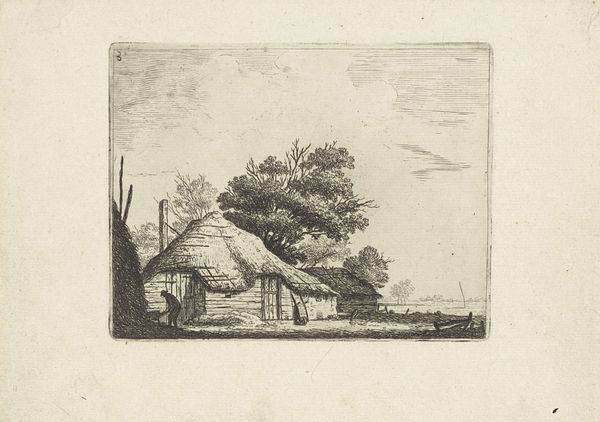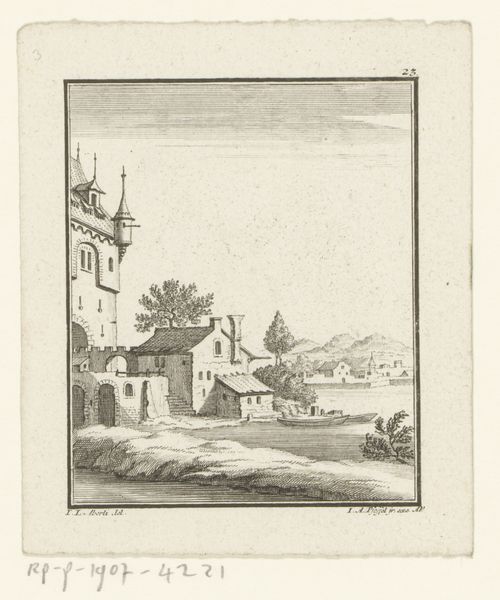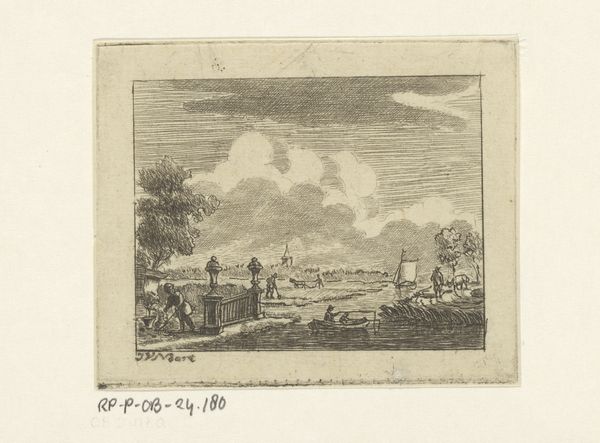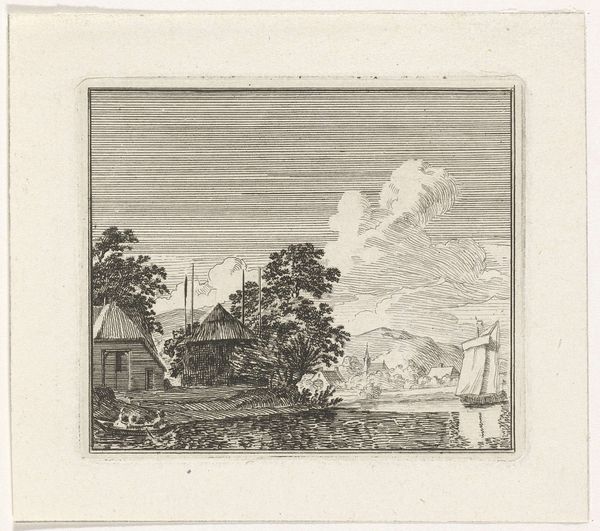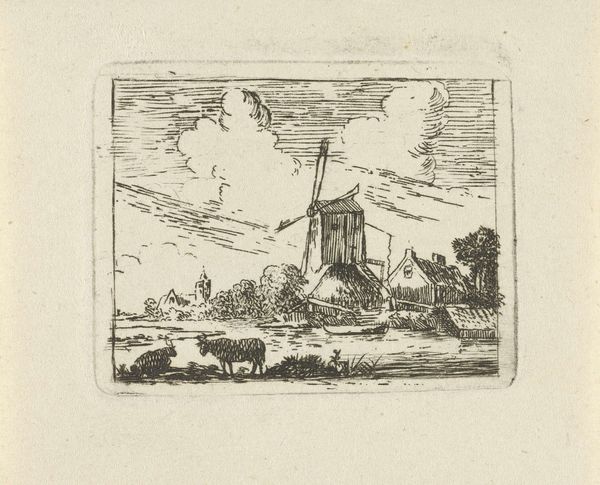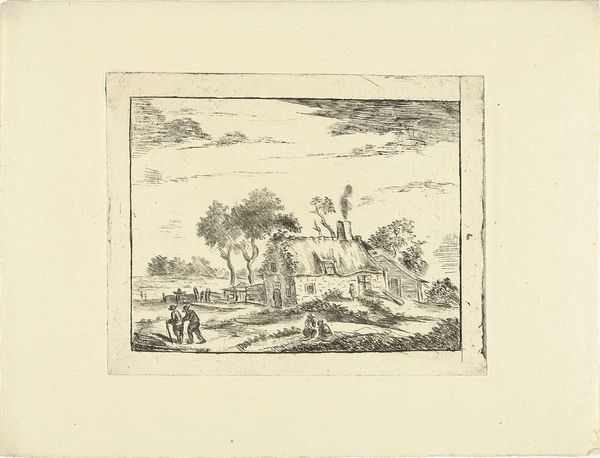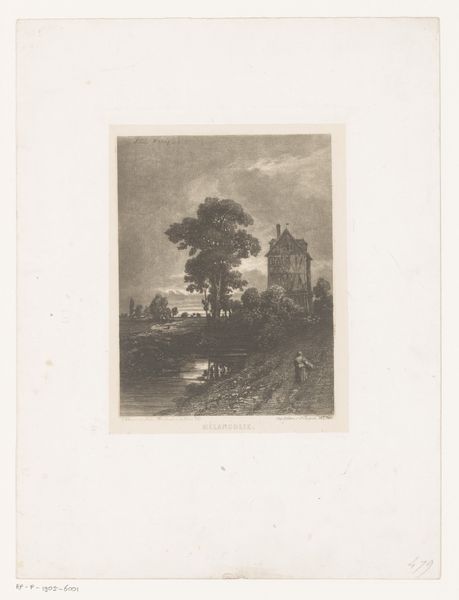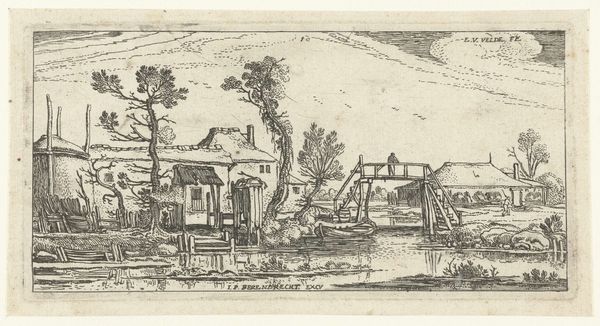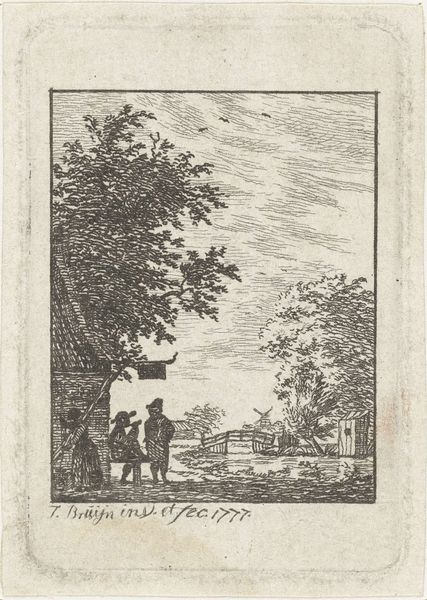
print, engraving
#
baroque
# print
#
landscape
#
cityscape
#
engraving
Dimensions: height 110 mm, width 100 mm
Copyright: Rijks Museum: Open Domain
Curator: Here we have "View of a Country House," an engraving made sometime between 1725 and 1768 by Johann Andreas Pfeffel. The level of detail achieved through engraving is impressive. What’s your immediate impression? Editor: My immediate impression is tranquility. A stillness despite the indication of labor – that smoke stack pouring out a cloudy exhale. I'm curious about that contrast. Curator: Well, engravings like this one often served a very specific purpose, didn’t they? They weren’t always about capturing raw emotion, but about documenting places and, perhaps, signaling status. Pfeffel's craftsmanship allowed him to reproduce precise architectural details and landscapes, almost like an early form of architectural photography. Editor: True. Looking closer, one can see how meticulously the buildings and the landscape are rendered; everything is subordinate to representing surfaces. But the materials speak to something beyond simple topography. Look at how light falls on the water versus how it illuminates the thatched roof of that building on the right. Are those even hay bales, or wheat perhaps? The labor involved! And whose labor, do you imagine, went into constructing and maintaining such an estate? Curator: Certainly, this landscape aesthetic carries the weight of patronage and social hierarchy. Someone commissioned this, wanted this property viewed in a certain way... What I appreciate is how the lines and etching seem to imply that time stood still – frozen—during its rendering. As if that single moment is still happening right now! Editor: Exactly. Even the style—that airy, Baroque touch—it isn’t accidental. This isn’t merely about seeing; it is about being seen seeing. The act of viewing and creating value becomes so intertwined. Curator: Yes, it presents a constructed image for viewers. But think also about the skill involved. The transfer of a design, through this specific form of manual printing, makes these scenes more accessible. Editor: I can almost smell the ink used in its creation, juxtaposed with the scent of smoke. That seems like such a relevant point to remember; who made this print, what did it mean for people to consume art through these media? Curator: Well, contemplating this piece alongside your ideas has certainly enriched my perspective; the artwork seems less of a time capsule, and more alive. Editor: Agreed. Let us move along and continue to question what the world once looked like.
Comments
No comments
Be the first to comment and join the conversation on the ultimate creative platform.
